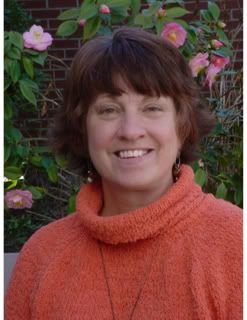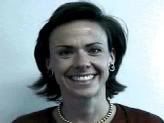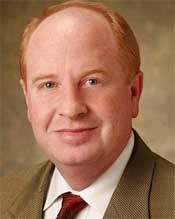Monday, March 05, 2007
Still Hopes' Executive Dir. Danny Sanford Elaborates on Executive and Industry Issues
1) Making a decision on whether we will continue to do traditional Assisted Living as a level of care or if we will use our Home Care Agency to deliver that level of care inside apartments and cottages.
2) Completing the transformation of the campus to include a Main Street concept for amenities and services.
3) Determining what "culture change skilled nursing" will look like at Still Hopes
4) Dealing effectively with the new residents' expectations to be included in decision making for almost every aspect of Still Hopes' operation while simultaneously honoring the older residents' expectations that Still Hopes' staff and Board will not allow the new residents to "take over."
5) Developing an active adult component in downtown Columbia
Top Five Industry Issues:
1) Board Leadership with great governance skills. I truly believe that the governance level that has gotten us this far will not be sufficient to get us to where we are going.
2) Management's expertise, skills and ability to operate highly diverse and complex organizations. I see a real talent shortage in our future.
3) Dealing, virtually simultaneously, with all the new paradigms, i.e. 1) "culture change skilled nursing," 2) resident participation in decision making processes, 3) determining what the continuum should look like (does assisted living have a continuing role and what is it), and 4) dealing with the tangle of aging-in-place, regulatory challenges/inconsistencies, federal fair housing laws.
4) Getting a preventative wellness centered operations model, as opposed to a restorative/palliative health care centered model, to permeate our business; so that future marketing efforts are centered around how healthy you will stay/become once you move to a CCRC instead of how you will be able to "go down in style" at a CCRC as you have chronic and progressive debilitation and move through our continuum.
5) Actually operating our industry with sound business practices, do the right things right and pricing what we do so that we continue to be successful and profitable, and building reserves to renew our infrastructure on time and in a quality way.
More than you asked for:
Now, if you allow, I'll digress a little just for your eyes. The real struggle I see is that we are trying to move with the necessary agility and speed while we are actually re-inventing an industry. I see us like the old saying of "trying to build a plane while we fly it." At Still Hopes we have embraced prevention and wellness focused care for our independent residents. We are also working to create a Home Care Agency to allow people to age-in-place basically to their heart's content. The huge issue/problem is that I don't have a clue what these two simultaneously running new approaches will do to our business. For the first time in a long time I can't depend on historical industry data to help me. I've disrupted the chronic decline curve with the wellness initiative. I've disrupted the move from independent to assisted living with the home care initiative. So... people will live well longer, but how much longer? People will live healthier, but how much healthier? People will use home care instead of moving to assisted living, but how many will choose this route and how successful will they be at doing it? How many assisted living beds should I truly have to support that? For that matter, how many skilled nursing beds do I really need to support a group that embraces the wellness initiatives we are putting before them? I know at least a majority of the questions, but I don't know the first answer, nor do I know where to go get them.
The last time this amount of critical business decision information was not available to our industry, we saw lots of them get into financial trouble and fail. In my career we have relied on pretty good actuarial information to keep our boats fairly well afloat. I could, up to now, predict with accuracy how many of my independent living units would turn over each year, and just about how long a new resident would live there before they needed assisted care and then skilled care. I could even tell you with some high degree of accuracy how long they would use both of these service levels. Now, I don't have a handle on that, except that I do understand that the new way is the right way and that people will live independently longer and stay healthier and then need less skilled care for a shorter period of time.
We are truly embarked on a USS Enterprise type journey. We are going where no man has gone before. And, Captain Kirk is hocking cheap hotel rates via an internet company. What are we to do? In the immortal words of Scotty: "I'm giving her all she's got Captain."
To succeed, we must find a way to continue to make reliable predictions to how people will age and when and how they will die in order to continue to price our entrance fees correctly and to offer the right service models in the right sized and designed buildings. The $64,000 question: How do we do it?
Tuesday, January 30, 2007
Westminster Canterbury Richmond shares their community's "Critical Issues"
Libby Bacon Bush
Vice President of Resident Services
Libby has been at Westminster Canterbury for 14 years. As Vice President of Resident Services, she is ultimately responsible for all areas of Independent Living, Assisted Living, Wellness, Salon Services, Galleria Shops, Front Desk, and Transportation.
After graduating from the
Libby has attained her Retirement Housing Professional Certification, and is a licensed Nursing Home Administrator. She is currently enrolled in the Virginia Commonwealth University CCRC Leadership Program. She has presented over the years on various long-term care topics, including assisted living, memory support and, most recently, culture change.
Born in
1. Culture change (Project Home) impact continuum wide
2. Meeting/exceeding expectations of current and future resident generations, i.e. creating increased flexibility, independence and choice within our community
3. Recruitment, retention & management of “World Class” staff
4. Create a community wide wellness culture
5. Complete current campus renovation plans while planning for future projects, to include aging in place consideration, service creep review etc.
Labels: KEY DECISIONS, wellness program
Friday, January 26, 2007
Jan. 26th SCANPHA participants: we want to hear from you!
Following up on the “Dancing in the Rain” introduction to the Vitalife Community Wellness Program that you learned about at SCANPHA, we now need to hear from you!
Labels: CEO, DANCING IN THE RAIN, JON PERSAVICH, KEY DECISIONS, wellness program
Monday, January 08, 2007
Still Hopes' Top 5 Critical Issues
 Still Hopes’ Wellness Director Denise Heimlich lists her community’s critical issues…
Still Hopes’ Wellness Director Denise Heimlich lists her community’s critical issues…Top 5 critical is
1. Overcoming the stigma relating to mental and emotional health. We must educate on how mental and emotional health impact physical health and get people to take this seriously. Problems must be confessed and the sufferer must feel motivated to seek help and understand that solutions are possible. Depression, anxiety, low self-esteem, lack of purpose, etc. are major problems in the population, regardless of age, but are typically viewed by the sufferer as personal failure that must be hidden. Older adults must understand that these types of problems are different from dementia and feel secure that he or she will not be moved into dementia units because they are crazy.
We professionals must have access to resources to help people. We must offer support groups, and counseling. First and foremost, we must make residents understand that we are all working toward improved mental and emotional health (at least I am!) This is a continuing journey in which each person must take an active part and personal responsibility.
2. Matching dining room food choices to nutritional education. Where I work, the registered dietician and I are having trouble offering nutritional education because the residents cannot fully use this information with the limited number of dining selections available. Some of our residents and staff really want to make healthier food choices, but their selections are limited.
3. Residents isolating themselves within their level of care and ostracizing those in higher levels of care. This attitude does not fit in a wellness model. There is no spirit of community that encompasses the entire campus. Not enough independent living residents volunteer to help those residents in higher levels of care and do not welcome “able” assisted-living or skilled nursing residents into IL activities. This problem leads into the problem listed as number 4:
4. Residents hiding or denying disability in order to remain designated as Independent. Health and longevity can increase if one is getting needed support. There may be solutions within IL or moving to another level of care may cause that disabled person to thrive again. I’m really tired of residents working against themselves and driving down their own fitness and health or that of their spouse just to hang on by fingernails in an IL cottage or apartment.
5. More effective pain relief and reduced pain medication. Pain stems from many causes such as osteo and rheumatoid arthritis, spinal stenosis, muscle imbalance, and fibromyalgia, but is typically medically treated with only pain medication or surgery. Valid research has shown that pain can be eliminated or reduced with alternative therapies such as exercise, massage, yoga, meditation, humor, and many other methods. A significant portion of the older adult population has pain, but is uneducated about how an individual can positively or negatively influence his or her own pain. The burden of education for pain relief seems to fall to us since the traditional medical community remains woefully insufficient in this matter. We must first educate ourselves so that we don’t fall victim to charlatans and false research. In my region, there seems to be few resources for alternative therapies. We have a Pain Clinic in my community that is sanctioned by a local hospital. My excitement upon learning about this clinic has turned to disappointment because, to date, I have observed only pain medication being dispensed from there. I have seen no evidence of biofeedback, exercise or yoga recommendations, or any other non-medical/non-pharmaceutical solutions. Additionally, my region does not have many alternative therapy practitioners. I have taken upon myself the task of pain education and have begun to relay this information to my community.
Labels: KEY DECISIONS, wellness program
Wednesday, September 20, 2006
The key issues that the CCRC and AARC leadership focus on are fairly typical, depending on where they are relative to their operational and historic timeline. For example, are they a new community? Are they an older community trying to defend their marketplace and reposition themselves? Are they small or large, poor or affluent, urban or rural? The issues may vary but they have a great deal in common.
Regardless of the circumstances and status of a given community, there are many important facets of successful communities that need to be considered if transitional communities seek to grow and sustain. They are: the overall market needs, marketing strategies, cost and availability of money, enabling / impacting legislation at state and federal levels, recruiting and retaining employees, liability exposure, and operational techniques as well as new service dimensions.
The paramount concern in all communities shifts, as does our economy. Issues shift as well when new cohort generations begin thinking about retirement. Therefore, state of the union in the senior industry is not static, but is constantly evolving. We have asked some key leaders in the CCRC industry (CEO’s) to define for us the following:
1.What are the five most important issues that concern you within your own community operation today?
2.What are the five most important issues that concern you within our senior retirement services industry today?
Our first guest commentator is Steve Shields, CEO of Meadowlark Hills in Manhattan Kansas. Steve is a well know visionary in the industry because of his passion to deinstitutionalize care service models and replace them with more personal home-like environments. Steve explains [with generic CCRC protocol and modeling],"we're not caring for our old, we’re warehousing them."
Steve, who has co-authored a book with LaVrene Norton, entitled, In pursuit of the Sunbeam – A practical Guide to Transformation from Institutional to Household, has written a dramatic and poignant directive regarding attitude and cultural change that he feels, personally, needs to be accommodated with a sense of urgency that is hard to refute.
Steve Shields is the President/CEO of Meadowlark Hills Retirement Community in Manhattan, Kansas and a sought-after national speaker and presenter on leadership and transformation in long-term care. Meadowlark has become a national leader in the creation of a resident-directed model and conducts day long education seminars on site to educate providers on the model and its application. Participants from 37 states and 12 foreign countries have utilized this experience to further deepen their culture change journeys. Shields is on the faculty of the Kansas State University’s Center on Aging where he teaches Leadership in Long-Term Care and is also on the Center’s Advisory Board. Shields is a member of the Pioneer Board. Shields provides presentations, retreats, and strategic planning services surrounding organizational transformation by nationally and internationally. Steve graduated from Kansas State University with a Bachelor of Science degree. Major: Social Work; Secondary Major Gerontology; Emphasis study: Long-Term Care Administration. Contact Steve @ steve.shields@meadowlark.org |
Labels: KEY DECISIONS, wellness program
Friday, May 26, 2006
CCRC: KEY DECISIONS SEMINAR
Many aging communities are in the throes of realization that without Repositioning (Reformation) they will remain in harms way and go out of business if they do not effect dramatic and immediate changes in their business plan. The emerging elder market is more sophisticated, has more choices and therefore is more demanding and will not settle for the products of yesterday.
The economy is edging towards its cyclical pinnacle which means we will be going - in the near future - into the downward side of the curve, which means new strategies will have to be considered to enable us to go forward; these strategies will be dramatically different from those we utilized on the upside of the economic curve.
THW, the IPP team of providers and many of our client alumina, have decided that we need to replicate the successes of our earlier problems solving and apply those techniques to mapping out a mutual strategy for the challenging years ahead.
To this end we are announcing a seminar academy that will be unlike any you have ever experienced before; one allied and linked to a university curricula, in which you will be invited to be both professor and colleague to and with your peer colleagues. It will be called:
CCRC; KEY DECISIONS SEMINARS
This Seminar is meant to be the beginning of an ACADEMY of experienced CEO’s who have successfully (or not successfully) gone through the experience of reformation.
It is our idea that this core group can become a critical resource for our industry and other CEO’s who are too often left stunned by the revelations discovered once they take the reins of the new communities they have been hired to steer.
As discovery and events unfold, there are often revelations of incredible circumstances that pose challenges that are far and above either the training or the experience of operational administrators who find these to be new challenges.
To help us go forward, we want you to design the course that would be most meaningful for you and your fellow colleagues. Therefore we are starting this blog, to identify the key issues, and pivotal decision points that arise in the repositioning and reformation of an older community as it revamps to face tomorrows market challenges.
In 2005 & 2006 to date, the trend towards repositioning (also sometimes known as redevelopment) the aging senior living campus continues to accelerate. In metro-Chicago, in particular, a number of sizable projects are currently under development, including the largest single repositioning project yet financed – $146 million for Plymouth Place in December, 2005. This unprecedented activity is expanding our body of knowledge, thereby increasing the speed and efficiency with which future projects are coming to fruition. In this two-part Z-News, we examine the Plymouth Place project to understand some of the common elements behind many successful repositioning projects.
____________________________
Labels: KEY DECISIONS, wellness program



